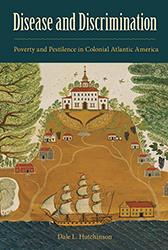In Seams of Empire, Carlos Alamo-Pastrana uses racial imbrication as a framework for reading this archive of little-known Puerto Rican, African American, and white American radicals and progressives, both on the island and the continental United States. By addressing the concealed power relations responsible for national, gendered, and class differences, this method of textual analysis reveals key symbolic and material connections between marginalized groups in both national spaces and traces the complexity of race, racism, and conflict on the edges of empire.
Buy Books: Browse by Season: Spring 2016
Fall 2025 - Spring 2025 - Fall 2024 - Spring 2024 - Fall 2023 - Spring 2023Please note that while you may order forthcoming books at any time, they will not be available for shipment until shortly before publication date
Reflecting on such issues as poverty, education, racism, cultural preservation, and tribal sovereignty, the contributors to this volume offer a glimpse into the historical struggles of southern Native peoples, examine their present-day efforts, and share their hopes for the future.
Misha Klein’s fascinating ethnography reveals the complex intertwining of Jewish and Brazilian life and identity.
The Diabetes Epidemic explores the complicated landscape of diabetes research and offers a glimpse of the extraordinarily difficult, and sometimes serendipitous, ways in which breakthroughs occur. At the University of Florida Diabetes Institute more than 100 faculty members are working on education, research, prevention, and treatment. Their fields are diverse--genetics, endocrinology, epidemiology, patient and physician education, health outcomes and policy, behavioral science, and rural medicine--but their goal is the same.
This book fills the need for a systematic study of setting as significant to the playwright’s work as a whole.
In this cross-cutting cultural history, Gregg Bocketti traces the origins of football in Brazil from its elitist, Eurocentric identity as "foot-ball" at the end of the nineteenth century to its subsequent mythologization as the specifically Brazilian "futebol, " o jogo bonito (the beautiful game). Bocketti examines the popular depictions of the sport as having evolved from a white elite pastime to an integral part of Brazil’s national identity known for its passion and creativity, and concludes that these mythologized narratives have obscured many of the complexities and the continuities of the history of football and of Brazil.
Dale Hutchinson argues that most colonists, slaves, servants, and nearby Native Americans suffered significant health risks due to their lower economic and social status. With examples ranging from indentured servitude in the Chesapeake to the housing and sewage systems of New York to the effects of conflict between European powers, Hutchinson posits that poverty and living conditions, more so than microbes, were often at the root of epidemics.
Bringing far-removed time periods into startling conversation, this book argues that certain attitudes and practices present in Europe’s Middle Ages were foundational in the development of the western concept of race.
Looking at the work of Junot Díaz, Cristina García, Julia Alvarez, and other Latino/a authors who are U.S. citizens, Marta Caminero-Santangelo examines how writers are increasingly expressing their solidarity with undocumented immigrants.
In this one-of-a-kind study of race and class in the Bahamas, Gail Saunders shows how racial tensions were not necessarily parallel to those across other British West Indian colonies but instead mirrored the inflexible color line of the United States. Proximity to the U.S. and geographic isolation from other British colonies created a uniquely Bahamian interaction among racial groups. Focusing on the post-emancipation period from the 1880s to the 1960s, Saunders considers the entrenched, though extra-legal, segregation prevalent in most spheres of life that lasted well into the 1950s.











